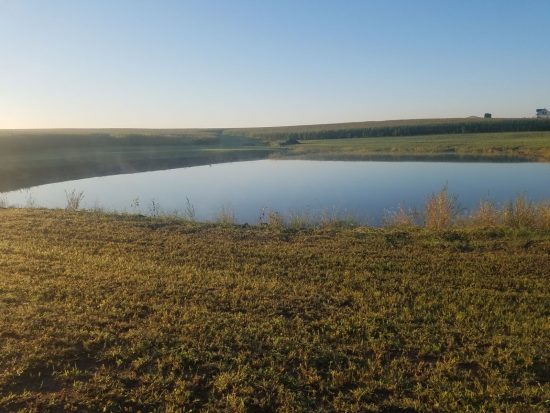
In 2016, the Upper Wapsipinicon River Watershed (UWRW) was awarded 4 million dollars as a part of the $96.9 million state-wide Iowa Watershed Approach (IWA) project, funded by a grant from the U.S. Department of Housing and Urban Development. The IWA project in the UWRW included the development of a 20-year plan for increasing flood resiliency along the Wapsipinicon River and its tributaries, hydrologic modeling conducted by the University of Iowa Flood Center, and implementation of 28 flood reduction best management practices near the City of Quasqueton in Buchanan and Delaware Counties. Record-setting floods in recent years prompted new approaches to flood risk reduction.
The Upper Wapsipinicon WMA formed in 2015, and is a partnership of more than 30 cities, counties and conservation districts who have committed to working together in their shared watershed to reduce the risk of flooding and increase water quality. Northeast Iowa RC&D was hired by the WMA Board to serve as watershed coordinator and provide landowner outreach, technical services to landowners and the WMA, and lead project implementation throughout the IWA project.
As a result, twenty-eight flood reduction projects have since been implemented in eligible implementation areas located near Quasqueton, Iowa, in the Smith Creek-Wapsi River, Dry Creek-Wapsi River, Sand Creek, and Nugents Creek-Buffalo Creek sub-watersheds of Buchanan and Delaware Counties. Landowners in the project area were eligible to receive 90% cost-share for the development of flood reduction best management practices such as wetlands, oxbow wetlands, detention ponds, grass waterways, and water and sediment control basins. Watershed coordinators worked directly with 21 private landowners who contributed over $75,000 towards their implementation projects. Project engineering was conducted by Shive-Hattery Architecture and Engineering Inc.
Northeast Iowa RC&D employee and Watershed Coordinator Tori Nimrod stated, “We received lots of inquiries from local landowners interested in implementing projects on their properties, so much so that we had more demand for projects than available funding through this program. The 28 projects we were able to construct have a highly beneficial impact on the landscape.”
Implemented projects work to reduce localized flash flooding by holding water on the landscape and slowly releasing it. One implemented detention pond can potentially reduce flash flows by 30-70%, therefore causing less destruction to downstream lands and infrastructure. Wetlands, oxbows and other implemented projects also greatly reduce nitrogen and phosphorus entering nearby ground and surface water sources. Additionally, each project introduces new high quality wildlife habitat for a variety of birds, fish, insects and mammal species.
The Upper Wapsipinicon Watershed Management Authority (WMA) continues to work with project coordinators to improve water quality and reduce flooding in the Upper Wapsipinicon River Watershed. The WMA raised funds to continue employment of Northeast Iowa RC&D as Watershed Coordinators. Their duty will be to provide landowner outreach and to seek out additional grant funding sources for flood reduction and water quality improvement throughout the whole Upper Wapsipinicon River Watershed. Nimrod noted, “Although the Iowa Watershed Approach Funding was allocated for specific areas of Buchanan and Delaware Counties, we look forward in exploring future project in the upper portions of the Upper Wapsi Watershed, where there is the greatest flood reduction benefit for downstream watershed residents.”
To learn more about the IWA Project, view the Resiliency Plan, or learn more about the Upper Wapsipinicon Watershed WMA, visit www.upperwapsi.org.


